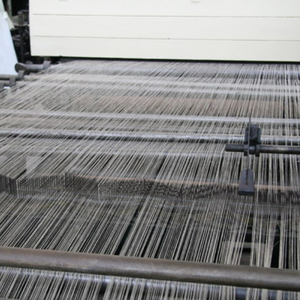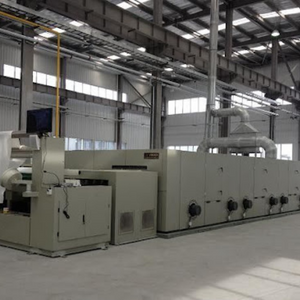TEXTILES DYES AND CHEMICAL MANUFACTURERS IN CHENNAI, INDIA
Green Fission is a leading manufacturer and supplier of textile dyes and chemicals in India, offering a wide range of products for printing, dyeing, finishing, and sizing. We collaborate closely with companies and customers in the textile industry to develop high-performance, cost-effective polymers. At Green Fission, our primary focus is on customer satisfaction, delivering high-quality products that consistently meet or exceed the needs of our clients in textile applications.

Printing Chemicals
Green Fission line of thickeners allows for higher printing speeds, superior performance, increased color yield, and higher shear rate. Printing chemicals are specialized substances used in the textile printing process to enhance the quality, colorfastness, and overall performance of printed fabrics. These chemicals play a crucial role in the preparation, application, and fixation of dyes and pigments onto textiles, ensuring vivid and durable prints. Printing chemicals can include thickening agents, fixatives, binders, and auxiliaries that optimize the printing process, improving the consistency, stability, and texture of the print.
Common types of printing chemicals include:
Thickeners: Used to control the viscosity of the printing paste, ensuring smooth and precise application onto the fabric.
Binders: These chemicals help in bonding the dyes or pigments to the fabric, ensuring the print adheres firmly and lasts longer.
Fixatives: Used to enhance the color fastness and resistance to washing, light, and abrasion.
Retarders and Accelerators: Control the drying time of the printed fabric, allowing for better control over the printing process.
These chemicals are essential for producing high-quality, high-performance textile prints used in various applications, from fashion and home textiles to industrial fabrics. With the rise of sustainable and eco-friendly trends, many printing chemicals are now formulated to be less harmful to the environment while maintaining excellent print quality.
By using advanced printing chemicals, manufacturers can achieve vibrant prints, reduce production costs, and meet the growing demand for sustainable textile products.

Digital Printing Chemicals
Green Fission line of pretreatment chemicals is used for digitally printed textiles including cotton, polyester, and poly-cotton blends.
- DTP is a high quality anti-migrant developed by Green Fission to be added to the padding dye bath. During the drying process, DTP prevents the migration of dyestuffs across the fabric and results in more uniform dyeing
- PCR is a high-quality resin without formaldehyde. This resin is used to increase value of garments by creating smooth and permanent wrinkles in given areas of the garment.
Digital printing chemicals are specialized formulations used in the textile digital printing process to ensure high-quality prints with vibrant colors, sharp details, and excellent durability. These chemicals are specifically designed for use in inkjet printing systems, where inks are directly applied to fabric using digital printers. Unlike traditional printing methods, digital printing allows for more intricate and customized designs, making the right digital printing chemicals essential for achieving optimal results.
Key types of digital printing chemicals include:
Inks: The most fundamental component in digital printing, these can be water-based, solvent-based, or UV-based. The inks are designed to penetrate the fabric and bond to the fibers, ensuring clear and long-lasting prints.
Fixatives: These chemicals are applied to the printed fabric to help fix the ink, ensuring color fastness and resistance to washing, abrasion, and exposure to light. They improve the durability of the print and enhance the longevity of the design.
Pre-treatment Chemicals: Used to prepare the fabric before printing, pre-treatment chemicals ensure better ink absorption, sharper print quality, and enhanced color vibrancy. They help the fabric take in the ink evenly and prevent issues such as ink bleeding.
Post-treatment Chemicals: Applied after printing to improve the final result. These include softeners, which enhance the fabric’s feel, and chemicals that help improve water and stain resistance.
Curing Agents: Curing chemicals help in setting the ink after printing. Depending on the ink type, curing agents may be activated by heat or UV light to create a strong bond between the ink and the fabric.
Digital printing chemicals enable textile manufacturers to produce intricate, high-quality designs with minimal waste and faster turnaround times. With the increasing demand for short-run and customized fabric prints, these chemicals help improve both the efficiency and sustainability of the printing process, making them essential for modern textile printing applications.

Sizing Chemicals
Green Fission line of products is used for sizing of warp yarns, and is a complete replacement for natural warp size such as starch. Sizing chemicals are vital agents used in the textile industry, particularly during the weaving process, to enhance the strength, durability, and smoothness of fibers and fabrics. These chemicals are applied to yarns before weaving to provide better abrasion resistance, reduce friction, and prevent breakage during the weaving process. The sizing process also helps in improving the overall performance and quality of the finished fabric.
Key Types of Sizing Chemicals:
Starch-based Sizing Agents: Starch is one of the most common sizing agents. It forms a thin coating on the yarn, giving it added strength and preventing the yarn from fraying. Starch-based sizings are biodegradable and widely used in cotton and natural fiber processing.
Synthetic Sizing Agents: These include polyvinyl alcohol (PVA), polyethylene glycol (PEG), and acrylates. Synthetic sizings offer excellent adhesion, water resistance, and durability compared to traditional starch-based agents. They are commonly used for synthetic and blended fibers.
Wax-based Sizing Agents: Wax or oil-based sizings provide a smooth finish to yarns and fibers, reducing friction and improving the efficiency of weaving machines. They are used primarily in silk, polyester, and nylon yarns.
Protein-based Sizing Agents: These are derived from natural sources like casein and soy proteins. They are generally used for specialized applications where a softer finish is required, such as in fabrics for delicate textile items.
Enzyme-based Sizing Agents: Enzymes are used to modify natural or synthetic fibers for better performance during weaving. They can help in achieving more uniform fiber thickness and improved yarn integrity.

Auxiliaries
Green Fission products are used for dyeing formaldehyde-free products. This line of cationizing agents was developed to obtain special dyeing effects and improve color yield on cellulosic fibers dyed with pigments.
Auxiliary chemicals in the textile industry are specialized chemicals used alongside primary processing agents like dyes and finishes to enhance, optimize, or support various stages of textile production. These chemicals play an essential role in improving the efficiency, performance, and quality of the textile manufacturing process. They are used during processes such as dyeing, finishing, printing, and washing to ensure superior fabric properties and help achieve specific effects.
Key Types of Auxiliary Chemicals:
Wetting Agents:
Wetting agents, or surfactants, help improve the penetration of water and chemicals into the fibers. They reduce surface tension and ensure even distribution of dyes, chemicals, or other agents on the fabric. Wetting agents are used in processes such as dyeing and scouring.Sequestering Agents:
These chemicals bind and neutralize metal ions, such as calcium or magnesium, that can interfere with dyeing and finishing processes. Sequestering agents help in preventing unwanted interactions that may lead to fabric defects like poor dye uptake, staining, or color unevenness.Levelling Agents:
Levelling agents are used in dyeing processes to ensure the even absorption of dyes onto the fabric. They help in controlling the dyeing rate and preventing color streaking, providing a uniform color shade across the fabric.Chelating Agents:
These chemicals work by binding to metal ions and forming stable complexes, making them less reactive and thus preventing any adverse effects on textile processing. Chelating agents are commonly used in cleaning, dyeing, and scouring processes to improve performance.Softening Agents:
Softening agents are applied to fabrics to enhance their hand feel or softness. They improve the texture of fabrics, making them more comfortable to wear or use. Softeners are particularly important in producing soft-touch textiles such as bedding, towels, and apparel.Antifoaming Agents:
These chemicals are used to control foam formation during processes like washing, dyeing, or printing. Excessive foam can interfere with the process, leading to inefficiencies or defects. Antifoaming agents help maintain smooth operations by reducing foam buildup.Anti-static Agents:
Anti-static agents prevent the buildup of static electricity on fabrics, which can lead to issues such as fabric cling or difficulty in handling during manufacturing. These agents are particularly important in synthetic textiles, where static electricity can accumulate more readily.Fixing Agents:
Fixing agents are used to improve the fastness properties of the fabric after dyeing, particularly with reactive dyes. They ensure that the dyes are fixed onto the fabric and do not easily fade or wash out. Fixing agents enhance color retention and overall durability.Desizing Agents:
These chemicals are used to remove sizing agents (such as starch or synthetic polymers) applied to yarns before weaving. Desizing ensures the fabric is clean and ready for further processing, like dyeing or finishing.pH Regulators:
pH regulators are used to adjust and maintain the pH levels in various textile processes such as dyeing and finishing. Maintaining the correct pH is essential to ensuring the stability of dyes and chemicals, as well as preventing fabric damage.Water Repellents:
Water repellent agents are used to treat fabrics to make them resistant to water. These chemicals form a protective barrier on the fabric surface, preventing water from penetrating the material. They are commonly used in outerwear and technical textiles.Antimicrobial Agents:
Antimicrobial agents are used to inhibit the growth of bacteria, fungi, or other microorganisms on textiles. They are particularly important in the production of medical textiles, sportswear, and home furnishings to maintain hygiene and prevent odor development.
Benefits of Auxiliary Chemicals:
Enhanced Processing Efficiency: Auxiliary chemicals improve the efficiency of textile manufacturing processes, reducing time and energy consumption.
Improved Fabric Properties: They help achieve specific fabric characteristics such as softness, strength, durability, and color uniformity.
Cost Reduction: By optimizing processes, auxiliary chemicals help reduce waste and minimize the need for rework, leading to cost savings.
Environmental Compliance: Many auxiliary chemicals are formulated with eco-friendly properties, helping manufacturers meet environmental regulations and produce sustainable textiles.
Auxiliary chemicals are essential for achieving superior fabric quality, ensuring smooth and efficient textile processing, and meeting customer expectations in terms of performance and finish. They complement the primary chemicals used in textile production and play a vital role in the overall success of textile manufacturing.

Rheology Control Chemicals
Green Fission thickeners offer numerous functional benefits.
Their properties are:
- To hold the paste in the screen
- To let the paste go through the screen when the shearing force is applied
- To control the amount of paste that is transferred
- To build up the viscosity quickly after the shearing force is removed
- To hold the paste in position on the cloth against capillary forces.
- To prevent flushing or bleeding
- To allow the paste to penetrate to the required extent To allow the dye to get into the fiber (substantive dye printing) or
- To allow the binder to cross-link (pigment printing)
